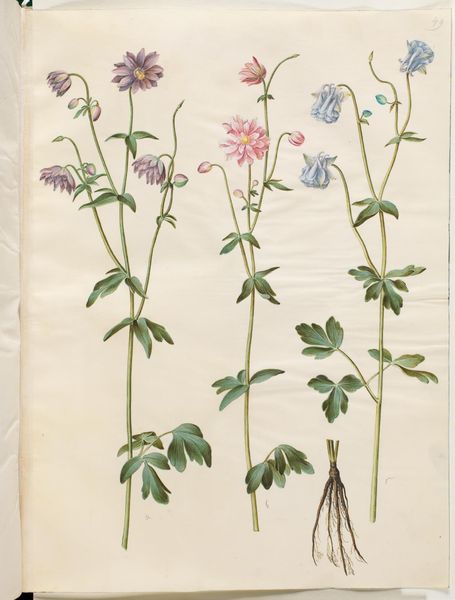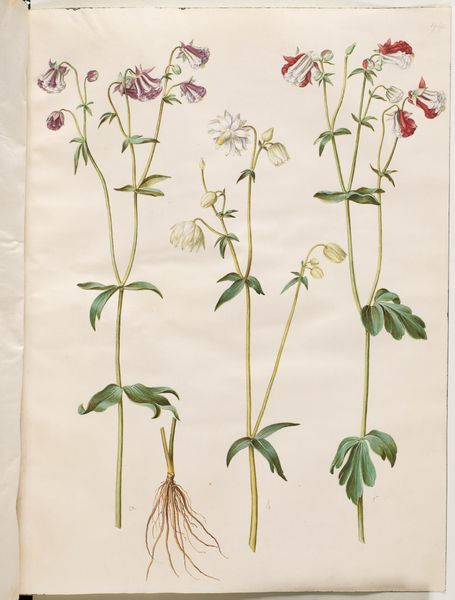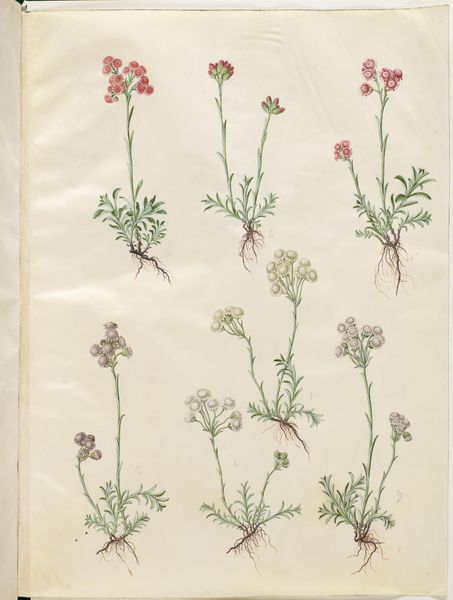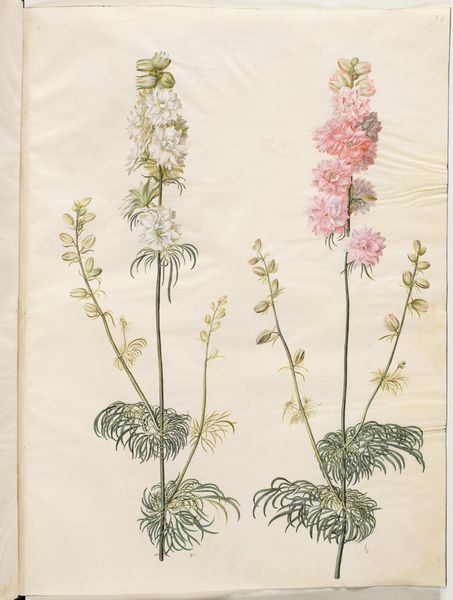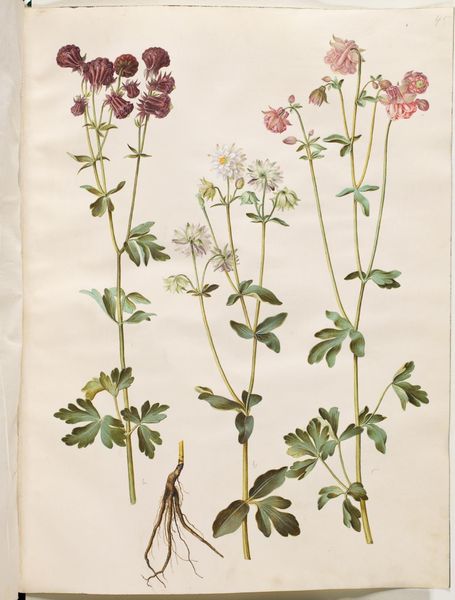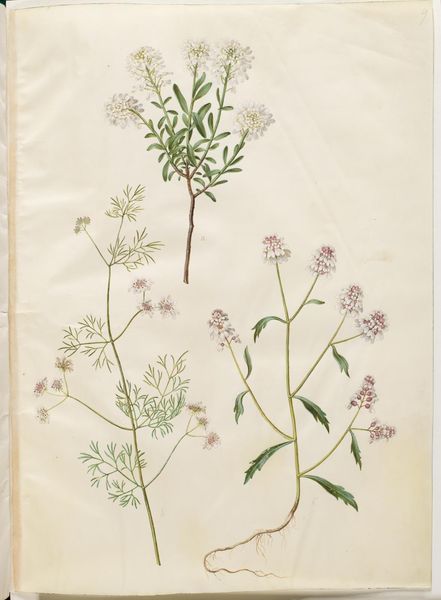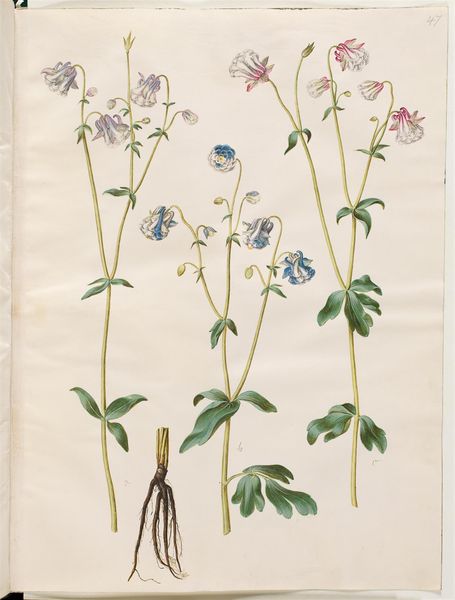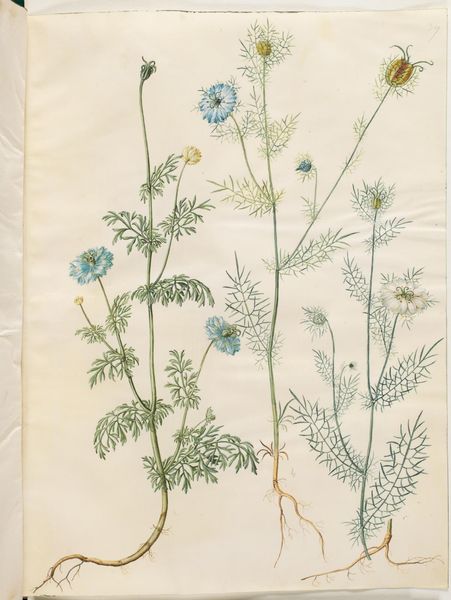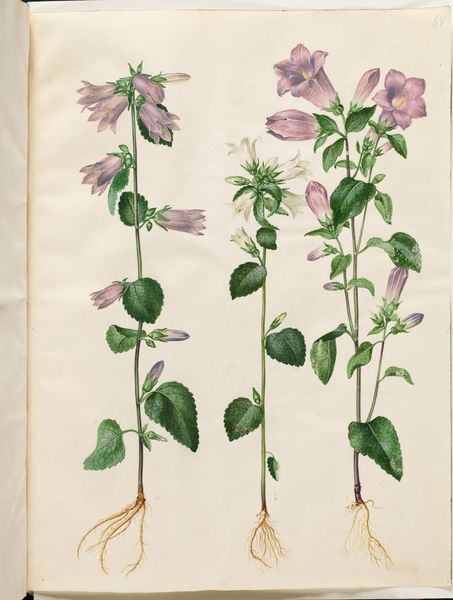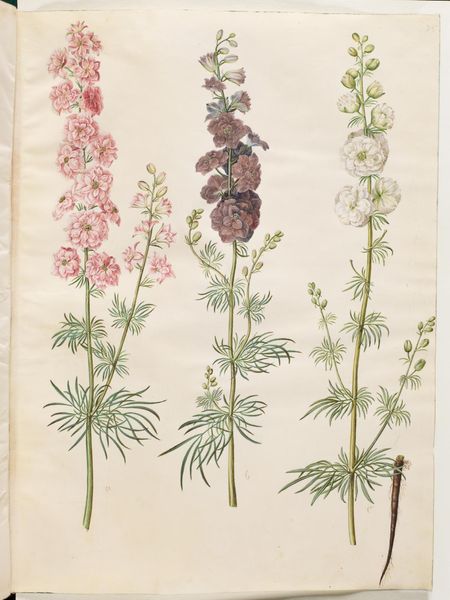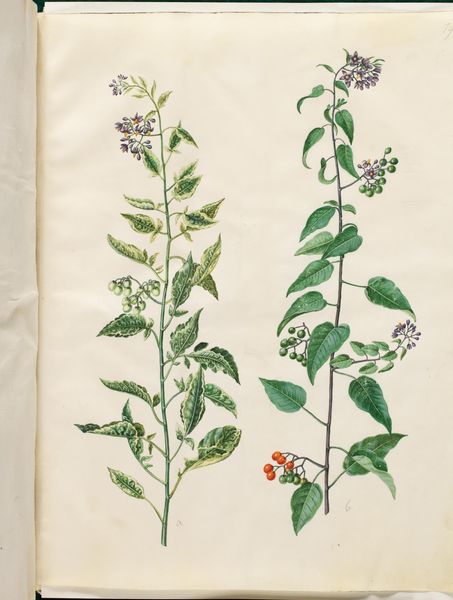
Polemonium caeruleum (almindelig jakobsstige); Centranthus ruber (rød sporebaldrian) 1649 - 1659
0:00
0:00
drawing, gouache, watercolor
#
drawing
#
water colours
#
gouache
#
watercolor
#
watercolour illustration
#
botanical art
#
watercolor
#
realism
Dimensions: 505 mm (height) x 385 mm (width) (bladmaal)
Curator: Here we have "Polemonium caeruleum (almindelig jakobsstige); Centranthus ruber (rød sporebaldrian)" a watercolor, gouache, and drawing work crafted between 1649 and 1659 by Hans Simon Holtzbecker. It's part of the collection at the SMK, the National Gallery of Denmark. What's your immediate impression? Editor: The colours are quite soft, a gentle realism, aren't they? And a clarity to the images of the plants that feels almost clinical, like a botanical study meant to serve more than mere decoration. I see power in how it represents nature with an objective gaze. Curator: Indeed, botanical studies such as this served a crucial role at the time, moving from decorative depictions to serving scientific study. Consider the social context of 17th-century science, when natural philosophy was gaining momentum and a keen interest in accurately recording the natural world. Editor: Yes, and what did this precision exclude? I am more intrigued by how such artistic representations reflect specific knowledge systems, and power dynamics of the period. It served the privileged and the political landscape. The colonial gaze of that period often filtered into supposedly objective botanical studies. Curator: Undoubtedly, these early scientific illustrations became part of larger projects, which had significant implications for resource exploitation, even colonialism. In a European context, too, apothecaries needed accurate images for making medications. So the paintings were practical. Editor: And how might this precision also reflect the politics of identity? The very act of categorizing plants reinforces established power structures and creates social and political control through natural classification. These works are far from politically neutral. Curator: A compelling point, they reinforce social values about control and categorization, yet Holtzbecker's skill also immortalizes these natural forms. As artworks, they invite viewers across centuries to reconsider our connections to the environment, both scientifically and imaginatively. Editor: Right. And perhaps now, we can use these historical representations as tools for intersectional approaches, using art to question traditional viewpoints and include other neglected narratives regarding both social justice and our place on the planet. Curator: Precisely. The intersections of art, science, and society that this seemingly simple piece embodies make it powerfully relevant still today. Editor: It goes beyond mere botanical art, opening dialogues regarding political awareness, human bias, and historical context, ultimately prompting questions about today's ecological narratives.
Comments
No comments
Be the first to comment and join the conversation on the ultimate creative platform.
